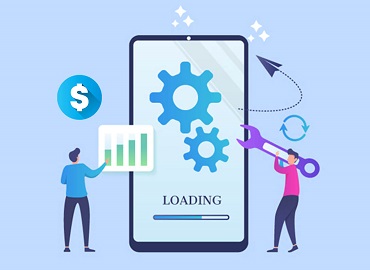Why Accessibility Matters in iOS App Development
By Johnmichal
In today’s digital age, mobile applications are an integral part of daily life. They help us communicate, work, shop, and entertain ourselves. As the reliance on mobile technology grows, ensuring that these apps are accessible to all users, including those with disabilities, has become more critical than ever. This is where the role of accessibility in iOS app development becomes pivotal. This article will explore why accessibility matters in iOS app development, and highlight how an iOS app development company in USA can lead the way in creating inclusive digital experiences.
Understanding Accessibility in iOS Apps
Accessibility in the context of iOS app development refers to designing and coding applications that can be used by everyone, including people with disabilities. Disabilities can range from visual, auditory, and cognitive impairments to motor and dexterity issues. An accessible app provides features that accommodate these users, ensuring they can interact with the app effectively and efficiently.
Apple has been a pioneer in promoting accessibility. Its iOS operating system includes a variety of built-in features like VoiceOver, a screen reader for the blind; Magnifier, for those with low vision; and AssistiveTouch, for individuals with motor skill challenges. These tools set a robust foundation, but it’s up to developers to leverage them fully.
Legal and Ethical Imperatives
One of the primary reasons accessibility is crucial in iOS app development is the legal and ethical obligation to provide equal access to technology. Laws such as the Americans with Disabilities Act (ADA) in the United States mandate that digital content, including mobile apps, be accessible to individuals with disabilities. Failure to comply can result in legal action and significant fines, not to mention damage to the brand’s reputation.
Beyond legal requirements, there is an ethical imperative. Technology should be an enabler, not a barrier. An iOS app development company in the USA that prioritizes accessibility demonstrates a commitment to social responsibility, ensuring that their products serve all users, regardless of their abilities.
Market Reach and User Engagement
From a business perspective, accessibility can significantly expand an app’s market reach. According to the World Health Organization, over a billion people worldwide live with some form of disability. By
making apps accessible, companies can tap into this substantial market segment, potentially increasing user base and revenue.
Moreover, accessible apps tend to offer a better overall user experience. Features that aid disabled users often enhance usability for all users. For instance, larger touch targets and clear visual cues benefit everyone, not just those with motor impairments. Consequently, accessible apps often see higher user satisfaction and engagement rates.
Best Practices for Accessibility in iOS App Development
Creating accessible iOS apps involves integrating accessibility into every stage of the development process. Here are some best practices:
1. Designing with Accessibility in Mind
Start by considering accessibility during the design phase. Use high-contrast color schemes, large font sizes, and intuitive layouts. Ensure that interactive elements are easily distinguishable and provide sufficient touch targets for users with motor impairments.
2. Implementing VoiceOver Support
VoiceOver is a critical tool for blind users. Ensure that all interactive elements are labeled correctly so VoiceOver can describe them accurately. Use dynamic type to support various text sizes and ensure that navigation elements are accessible through VoiceOver.
3. Supporting Multiple Input Methods
Not all users interact with apps using touch. Some might use voice commands, switch controls, or other assistive technologies. Ensure that your app is compatible with these input methods by following Apple’s accessibility guidelines.
4. Providing Alternative Text
Images, icons, and multimedia content should have alternative text (alt text) to describe their function or content. This helps users who rely on screen readers understand the context of visual elements.
5. Testing with Real Users
Testing is an essential part of developing accessible apps. Involve users with disabilities in your testing process to get real-world feedback on how well your app meets their needs. Use Apple’s accessibility tools and simulators to identify and fix issues.
The Role of an iOS App Development Company in USA
An iOS app development company can play a vital role in advancing accessibility. These companies often have the resources and expertise to implement best practices effectively. They can:
1. Lead by Example
By prioritizing accessibility in their projects, these companies can set a standard for others in the industry. Showcasing accessible apps can influence clients and competitors to follow suit.
2. Offer Specialized Services
Providing specialized services such as accessibility audits, training for development teams, and consulting can help other businesses achieve their accessibility goals.
3. Stay Updated with Regulations
An iOS app development company in USA must stay abreast of the latest accessibility regulations and guidelines. This ensures their clients’ apps are not only compliant but also optimized for accessibility.
4. Innovate in Accessibility Solutions
By investing in research and development, these companies can innovate new tools and methodologies to enhance app accessibility, thereby contributing to the broader tech community.
Conclusion
Accessibility in iOS app development is not just a legal obligation or a market strategy; it is a commitment to inclusivity and user-centric design. By prioritizing accessibility, developers can create apps that provide equal opportunities for all users, enhancing both the user experience and the app’s success in the market. An iOS app development company in USA can lead this charge, setting benchmarks and pioneering innovations that make technology accessible to everyone. In doing so, they not only comply with regulations but also champion a more inclusive digital world.

